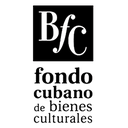Executive Secretary

XIV Conferencia Internacional de Ciencias Empresariales
CICE 2025
IX Simposio de Contaduría, Finanzas y Auditoría
Resumen
El Hospital General Docente Dr. Daniel Codorniú Pruna enfrenta desafíos en el cumplimiento de normativas ambientales (Ley 150 y NC 27:2012), particularmente en la gestión de residuos y el vertimiento de líquidos sin tratamiento. Aunque cuenta con licencias del CITMA, carece de herramientas para cuantificar su impacto ambiental y optimizar recursos. Objetivo: Proponer el cálculo del costo ambiental del Laboratorio Clínico del Hospital General Docente Dr. Daniel Codorniú Pruna, que permita: Cuantificar el impacto económico-ambiental de sus operaciones, y Proponer acciones para mejorar la gestión sostenible. Metodología: El estudio combinó: Enfoque cualitativo:Análisis documental, observación participante, entrevistas a profundidad y grupos de discusión con personal médico y administrativo. Enfoque cuantitativo: Métodos estadísticos y fórmulas para calcular costos de materiales. Tuvo etapas: Diagnóstico ambiental municipal, evaluación hospitalaria específica y desarrollo del modelo. Resultados y discusión: Se identificó un costo ambiental por consumo de materiales por residuos líquidos no tratados. El agua representó un ítem crítico, con un consumo, se demostró ser replicable para otros departamentos del hospital. Conclusiones: La cuantificación de costos ambientales es esencial para una gestión hospitalaria sostenible. Urge invertir en sistemas de tratamiento de aguas y capacitación en manejo de residuos. El cálculo propuesto sirve como referencia para otras instituciones de salud en Cuba, alineándose con los objetivos del CITMA.
Abstract
The General Teaching Hospital Dr. Daniel Codorniú Pruna faces significant challenges in complying with environmental regulations (Law 150 and NC 27:2012), particularly regarding waste management and the discharge of untreated liquid waste. While the institution holds valid CITMA licenses, it currently lacks adequate tools to properly quantify its environmental impact and optimize resource utilization. This study aimed to develop an environmental cost calculation methodology for the hospital's Clinical Laboratory, with two primary objectives: first, to quantify the economic-environmental impact of its operations, and second, to propose concrete actions for improving sustainable management practices. The research employed a mixed-methods approach combining qualitative and quantitative methodologies. The qualitative component included documentary analysis, participant observation, in-depth interviews, and focus groups with medical and administrative staff. The quantitative analysis utilized statistical methods and specific formulas to calculate material costs. The study progressed through three distinct phases: initial municipal environmental assessment, detailed hospital evaluation, and final model development. Key findings revealed substantial environmental costs associated with material consumption and untreated liquid waste disposal. Water usage emerged as a particularly critical factor, with the analysis demonstrating that the developed model could be effectively replicated across other hospital departments. The study concludes that accurate environmental cost quantification is essential for sustainable hospital management. Immediate priorities include investment in water treatment systems and comprehensive waste management training. The proposed calculation methodology serves as a valuable reference model for other Cuban healthcare institutions, supporting alignment with CITMA's strategic environmental objectives.
Sobre el ponente

Elizabeth María Liste Marrero

Discussion

 Oro
Oro
 Oro
Oro
 Plata
Plata